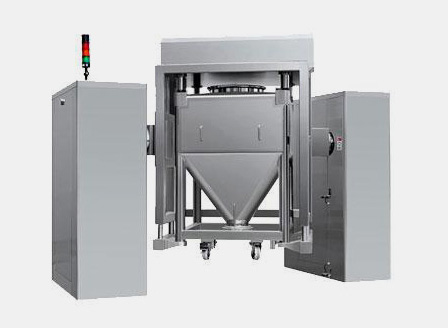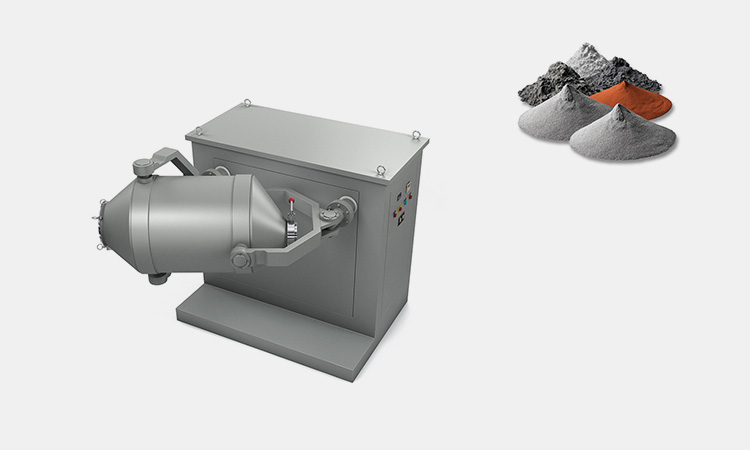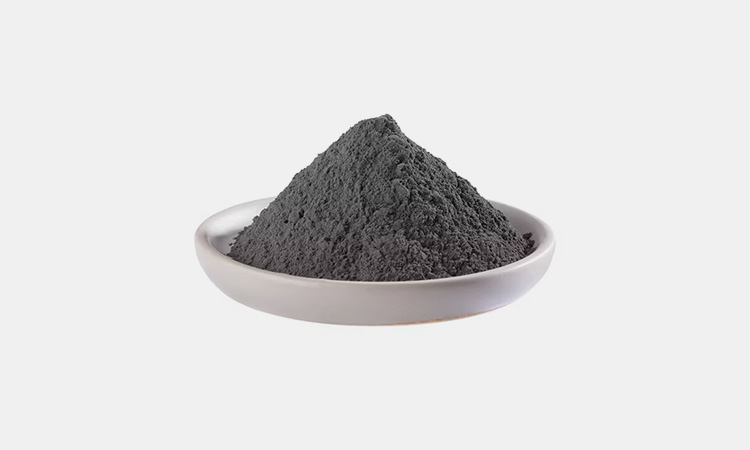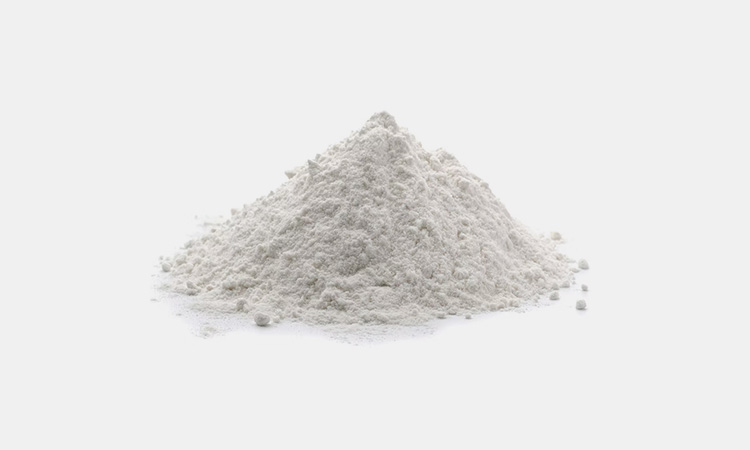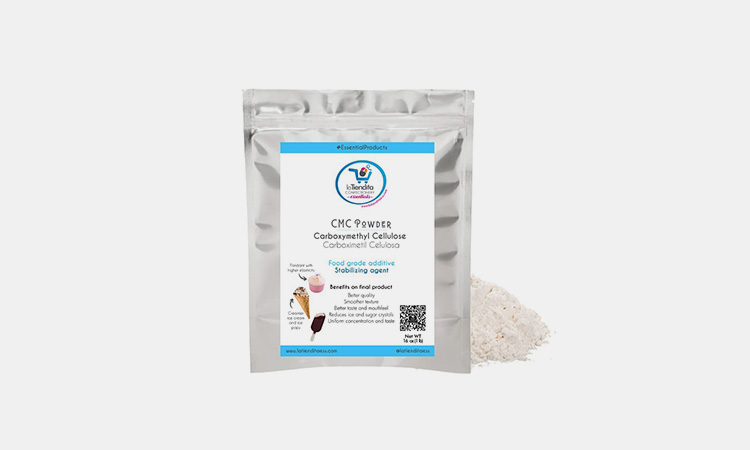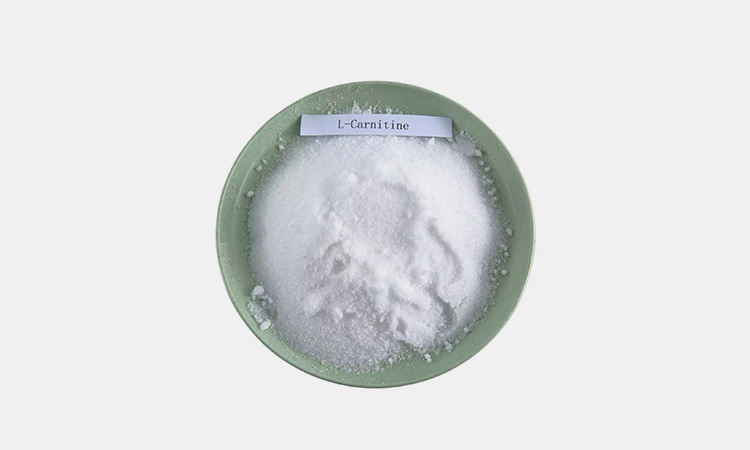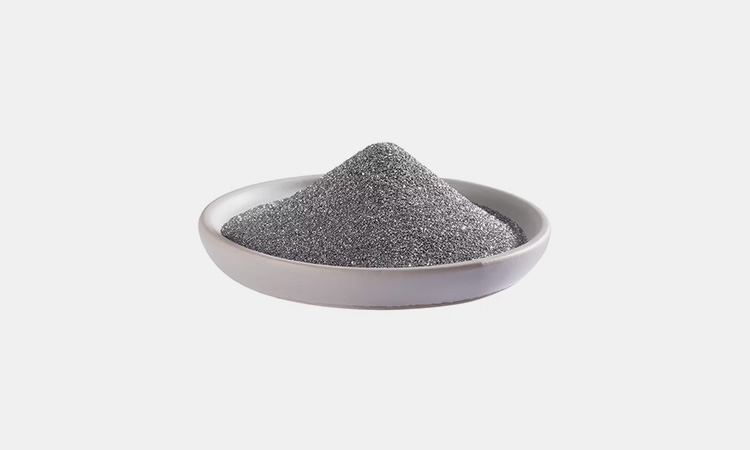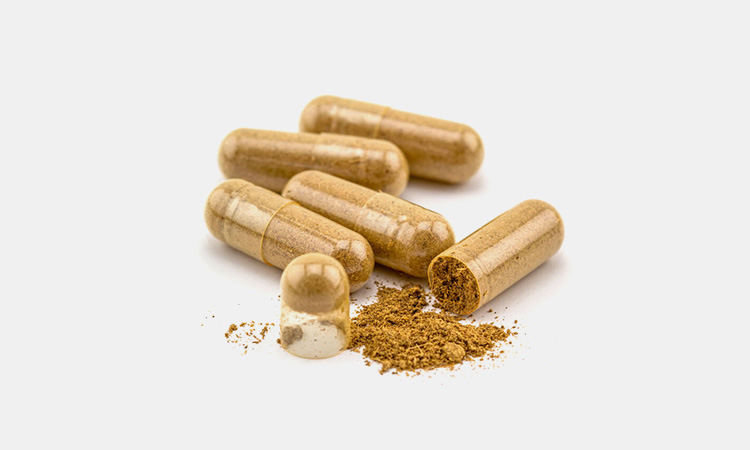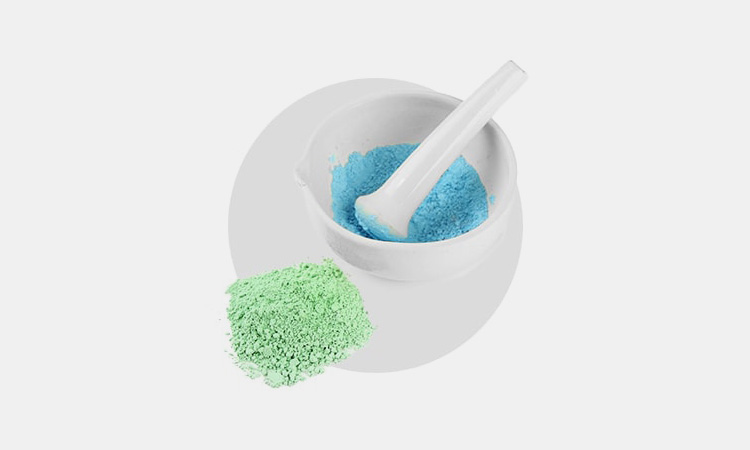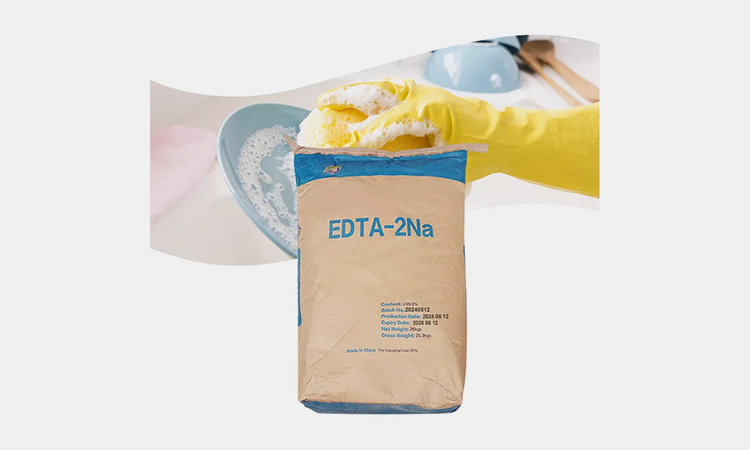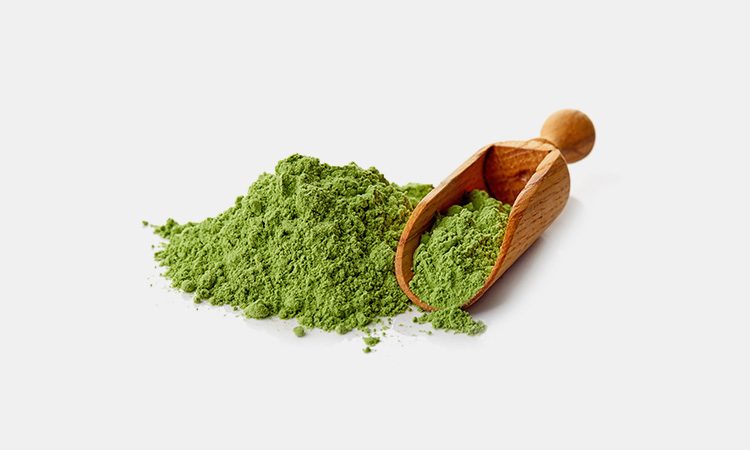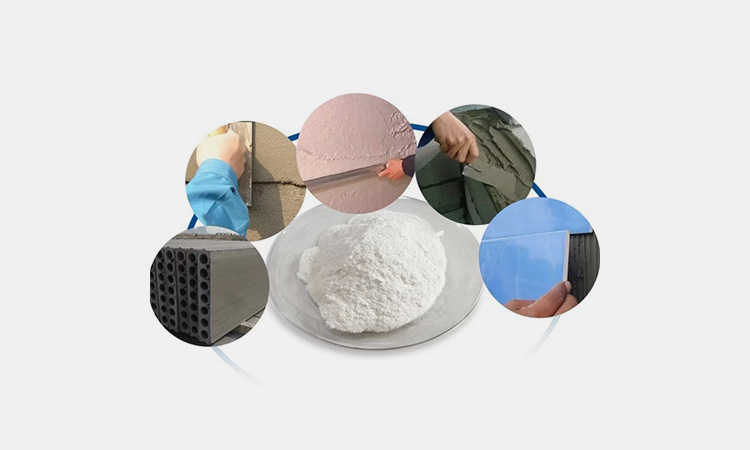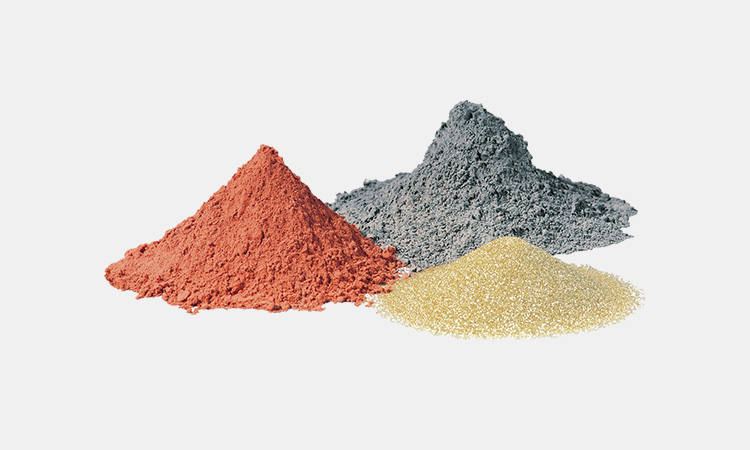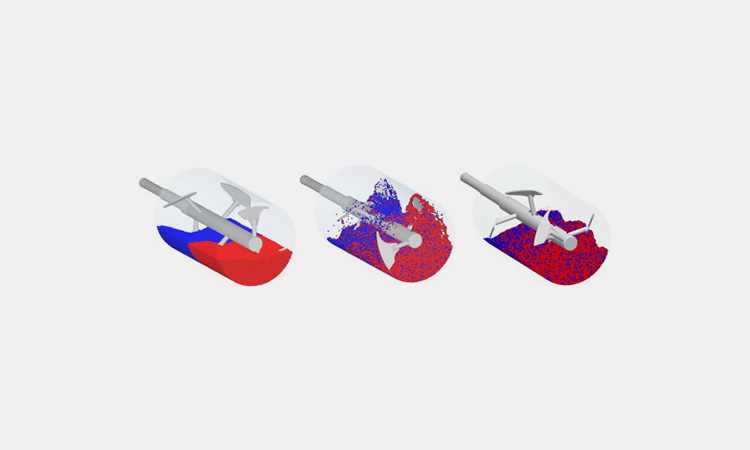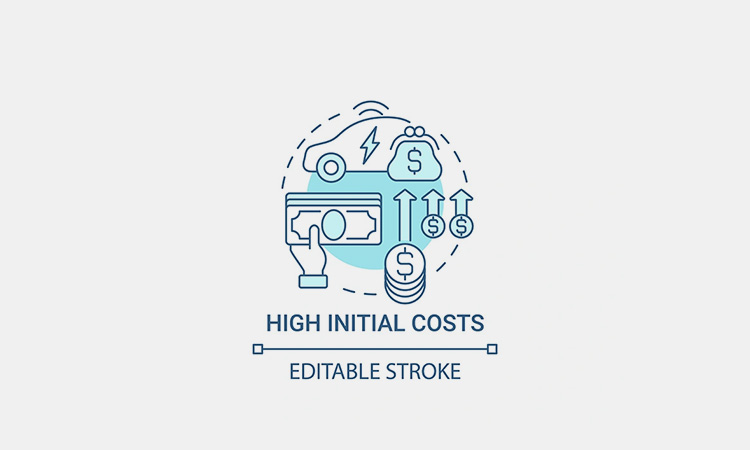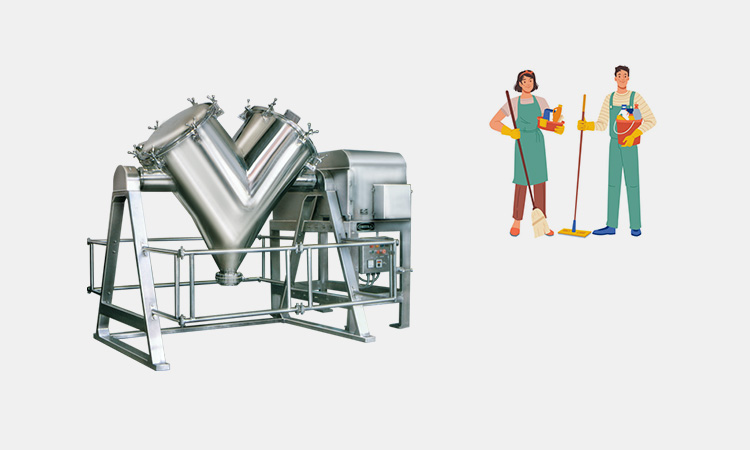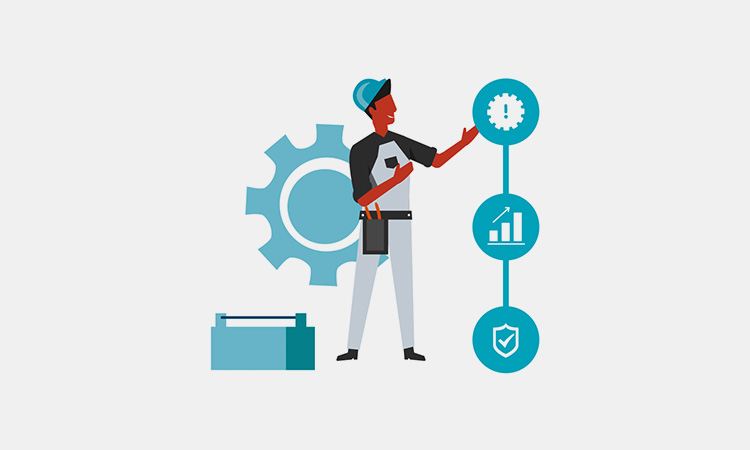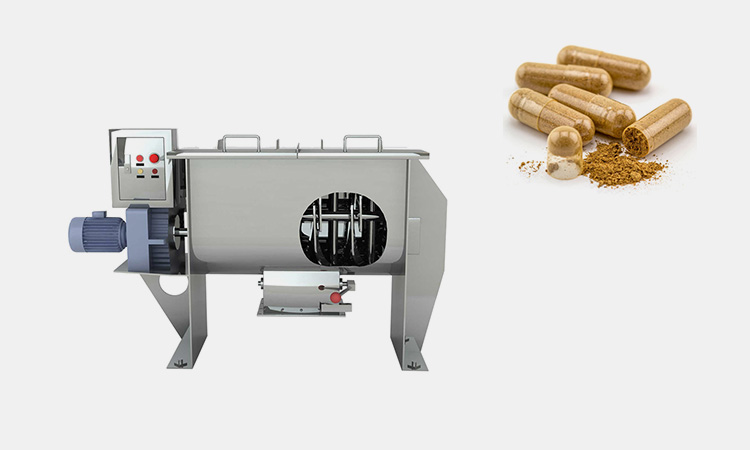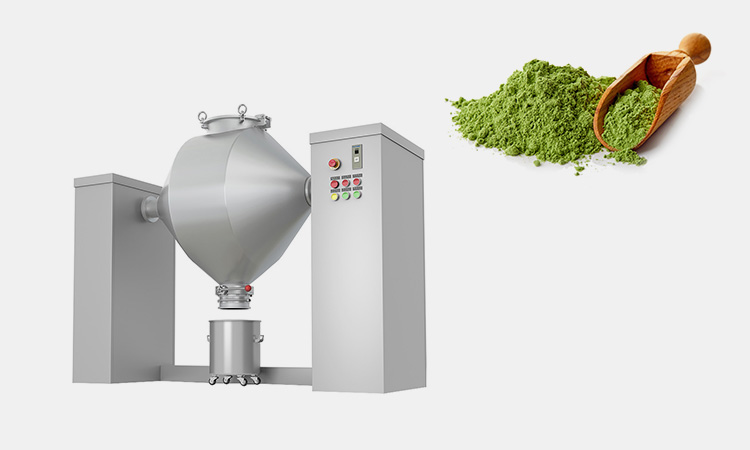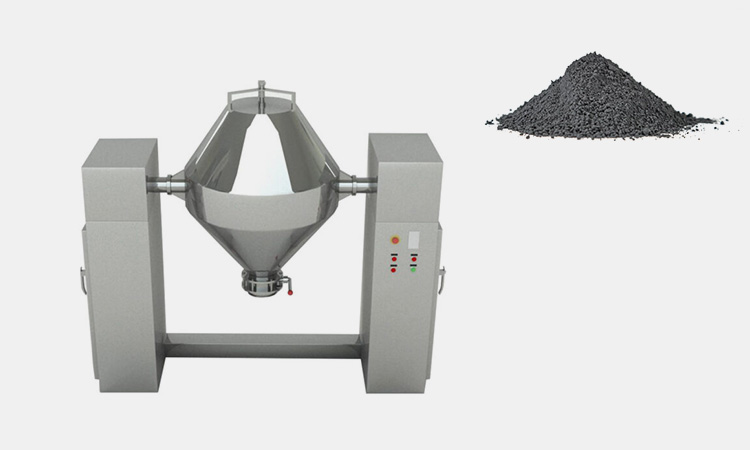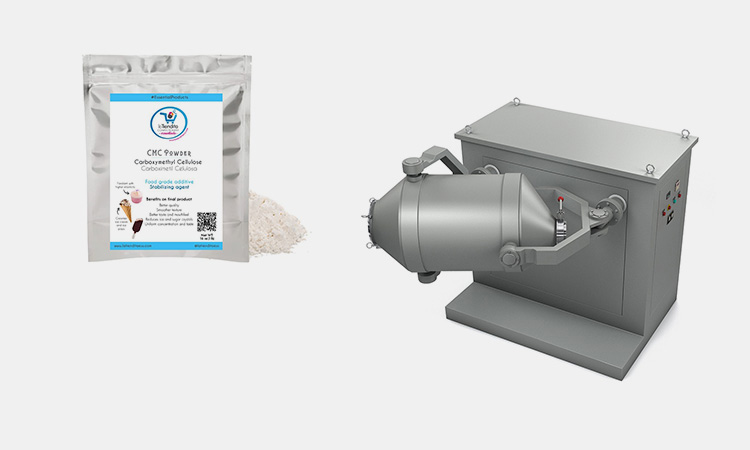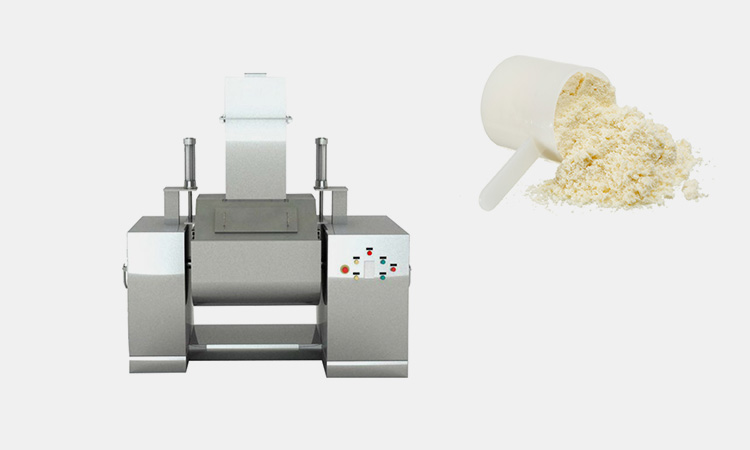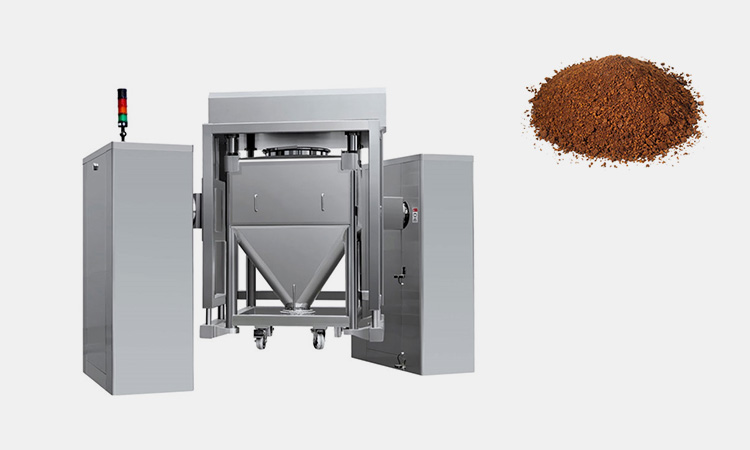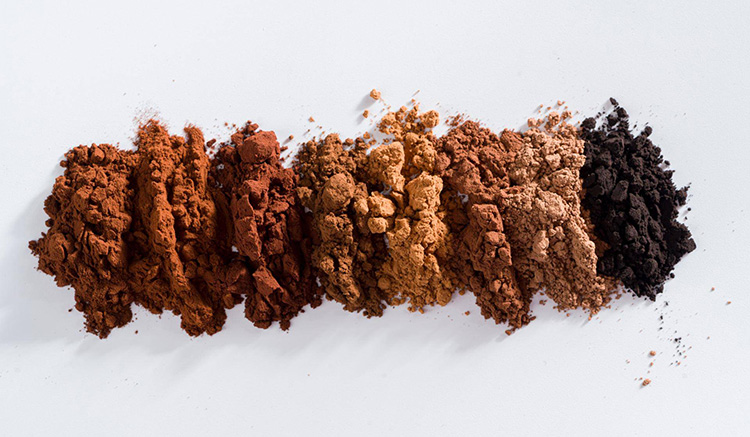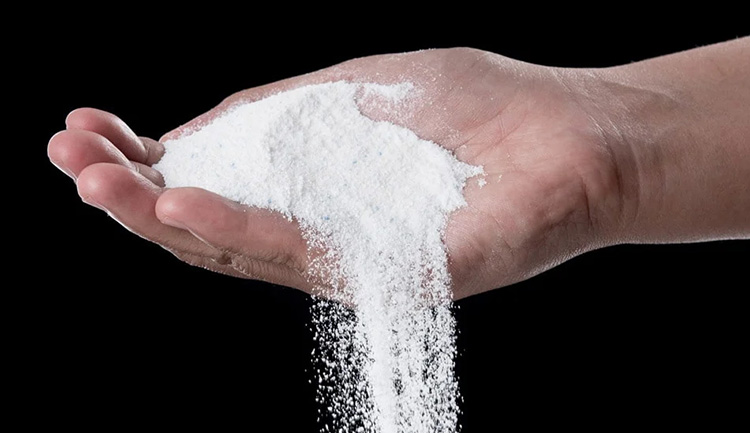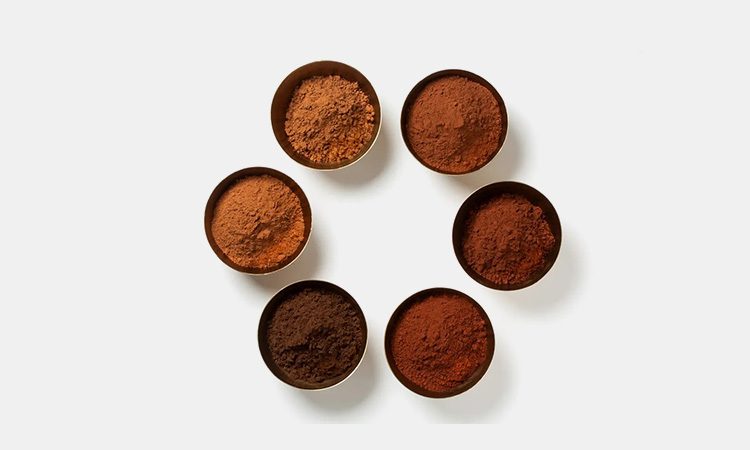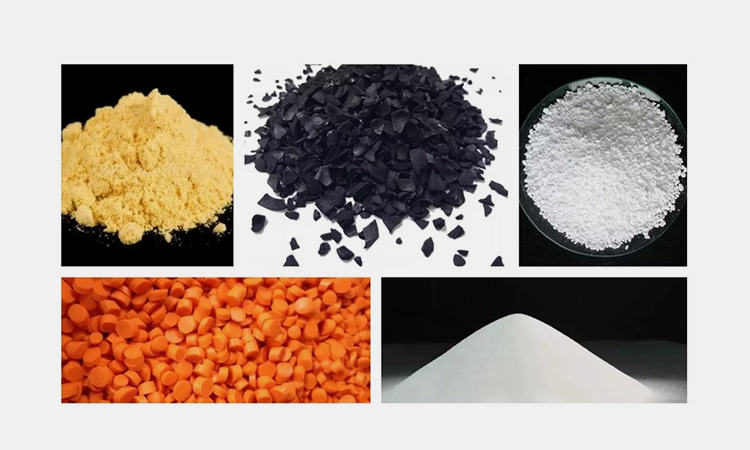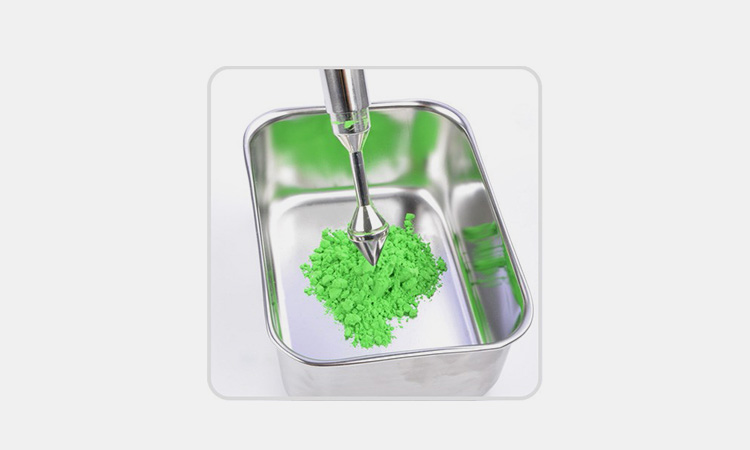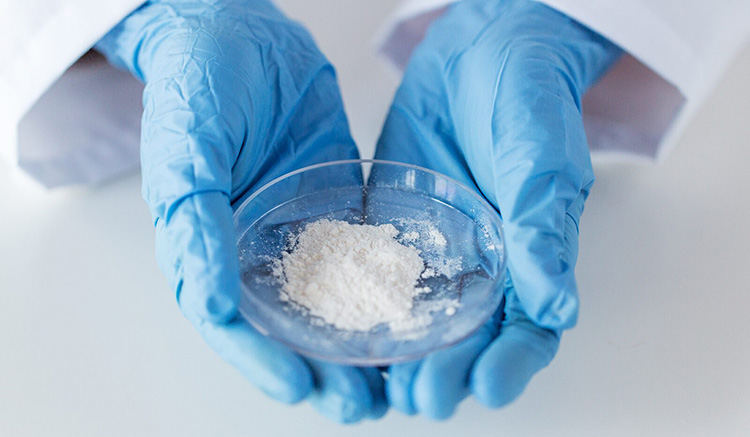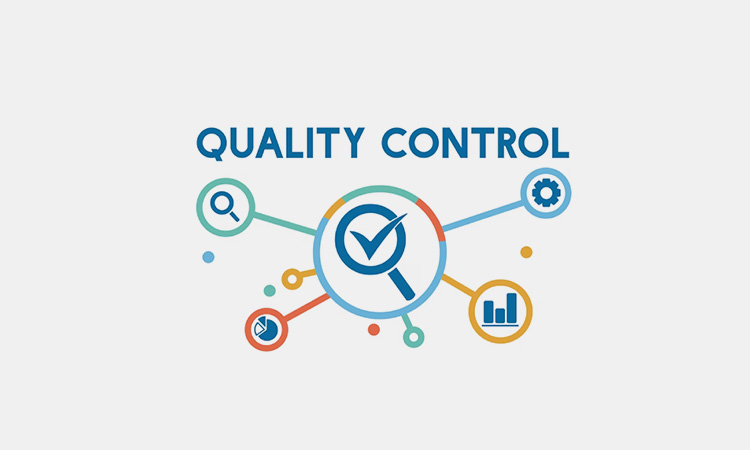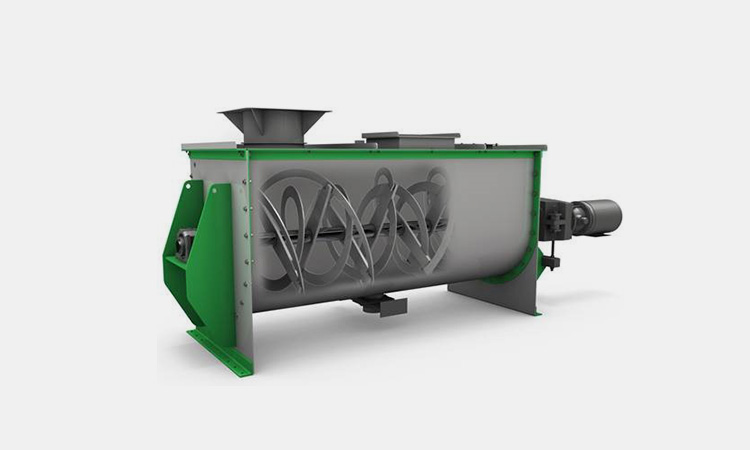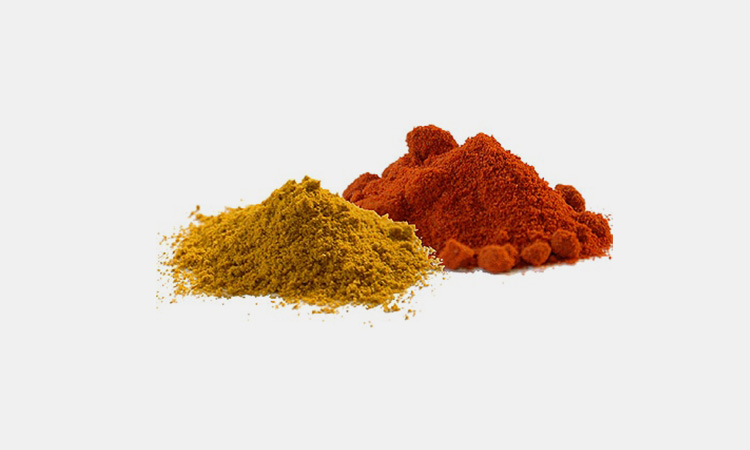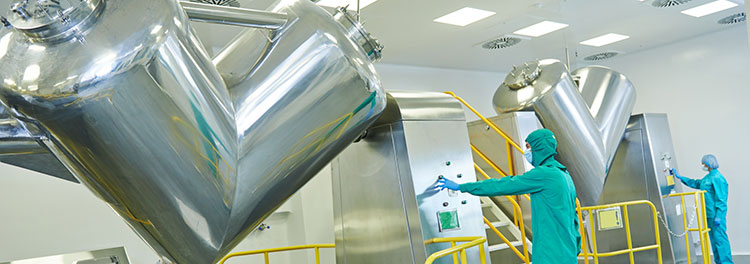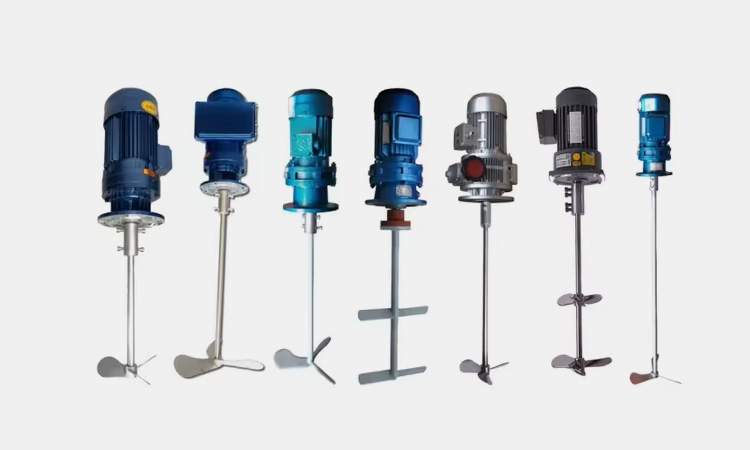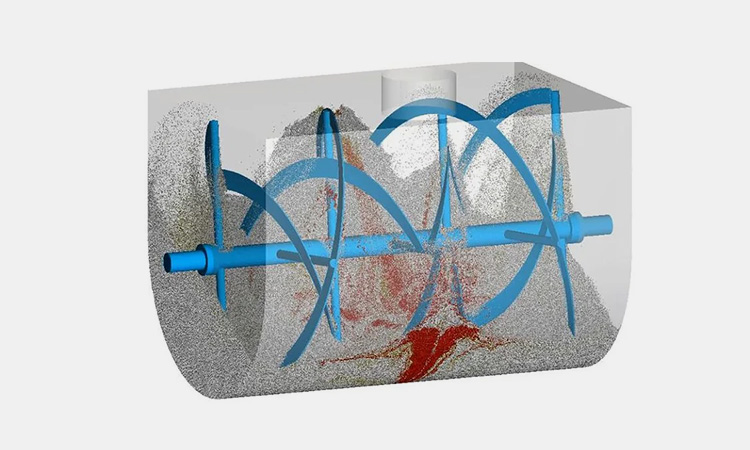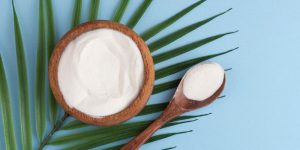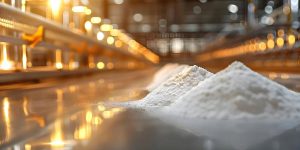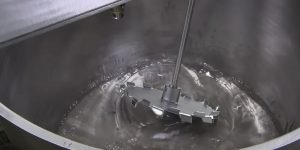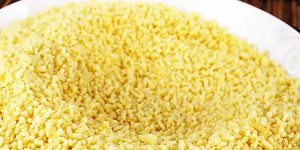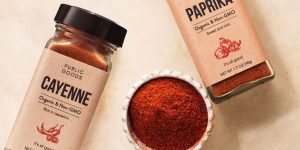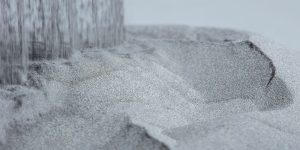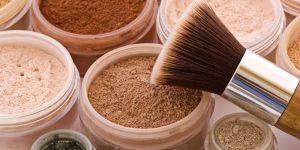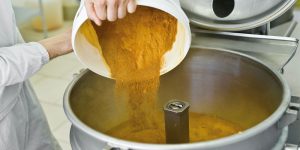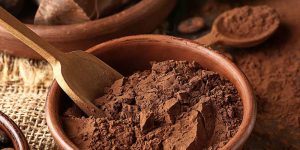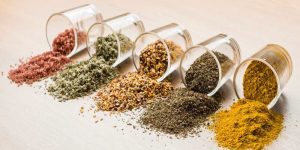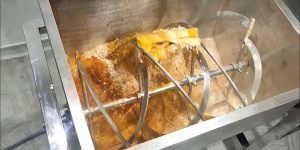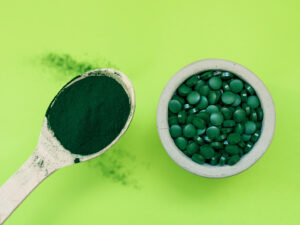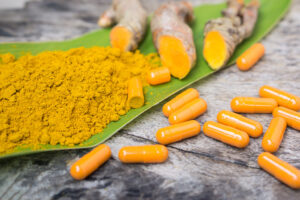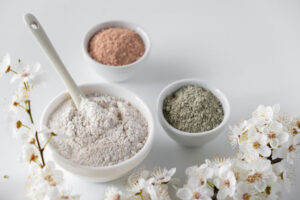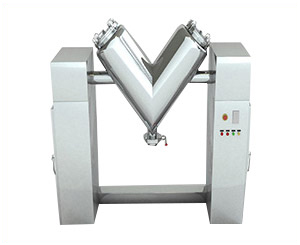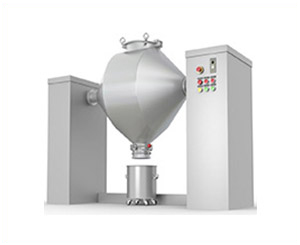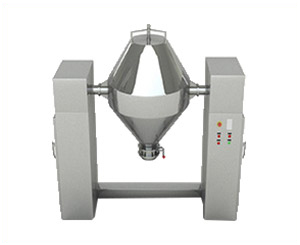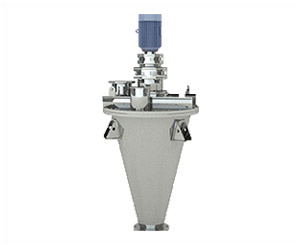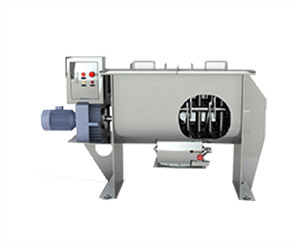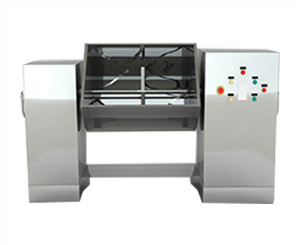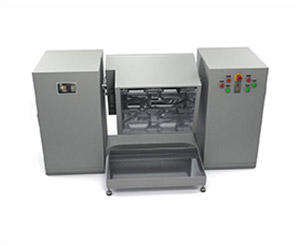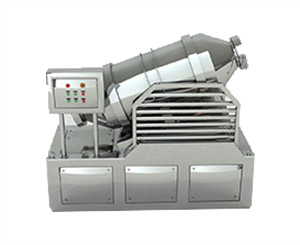Powder Mixer: The Complete FAQ Guide In 2025
Are you looking for a perfect solution and detailed guidance for powder mixing? Confused about the various powder mixers on the market with different design? What are the differences between them? Why there are so many types of equipment for processing and mixing powder? What effects can different powder mixers produce?
Curious about the mixing intensity, effect, working principle, structure, cleaning and maintenance, and related processes of powder mixers? If you want to achieve professional powder product mixing efficiency and effect. Then this post about powder mixer is worth your time. Take a try now!
1.What Is Powder Mixer?
AIPAK powder mixer
The powder mixer is a powder blending and mixing equipment that can be used in the pharmaceutical, food and chemical industries. It can handle the mixing of powders of various materials and particle sizes for you. During the powder handling, it can ensure the uniformity and consistency of the material mixing. Unlike manual mixing, the powder mixer can provide you with high-precision powder mixing.
2.What Materials Can Be Processed By Powder Mixer?
When using a powder mixer, the most common types of materials are active pharmaceutical ingredients, excipients, lubricants, etc. Classified by the particle size of the powder, it includes:
Fine powder
Fine powder-sourced: kennametal
Fine powder refers to powder particles with a diameter of less than 100 microns. When handling fine powder, be careful not to over-shear and crush. And try to use gentle mixing force.
Coarse powder
Coarse powder-sourced: profoodworld
Coarse powder refers to powder particles with a diameter greater than 100 microns. It can withstand higher shear and mixing forces to achieve a more fluid form.
Viscous powder
Viscous powder-sourced: gosupps
Powders with relatively high humidity can be crushed and mixed using a powder mixer with specific blades due to their high water content.
Hygroscopic powder
Hygroscopic powder-sourced: new material
Some powders may have average humidity, but they are prone to absorb moisture during handling. This type of powder needs to be handled in a confined space.
Sensitive powder
Sensitive powder-sourced: kennametal
Many powders with high doses of active ingredients are very sensitive to temperature, humidity or oxygen control and are very likely to lose activity or change properties. They should be handled in a specific environment.
3.How Powder Mixer Applied In Different Industries?
Powder mixers are widely used in a wide range of industries. The main industries in which they are used include:
Pharmaceutical industry
Pharmaceutical industry-sourced: swissnutritionsolutions
Many powders for capsule filling and tablets are pre-treated in this way in advance. Powder mixers can evenly mix pharmaceutical powders with active ingredients, excipients, additives, etc., which is convenient for subsequent pressing or filling.
Chemical industry
Chemical industry-sourced: hunterlab
Powder mixers can complete the mixing and stirring of various detergents, paints, coatings and other materials in all chemical industries.
Daily chemical industry
Daily chemical industry-sourced: jysunway
All kinds of laundry detergents needed in life, cleaning powders used in the kitchen, loose powders and blushers needed for cosmetics, etc., can all be accurately and humorously processed using powder mixers.
Food industry
Food industry-sourced: eatdrinklivewell
Various flours, seasoning powders, milk powders, sugars, etc. in the food industry are mixed and processed by powder mixers.
Construction industry
Construction industry-sourced: honestsh
Many construction industries use powder mixers to mix cement, sand and other building materials to ensure uniformity and consistency.
4.What Are The Benefits of Powder Mixer?
Powder mixers are widely applied due to its powerful advantages. These include:
Uniform mixing
Uniform mixing-sourced: dr-fritsch
The purpose of using a powder mixer is to ensure that your materials are evenly mixed, eliminate lumps or shear larger particles according to your requirements.
High-precision processing
High-precision processing-sourced: sciencedirect
By setting relevant parameters, controlling the mixing time, speed and related intensity, the powder mixer can provide high-precision powder mixing and shearing according to your needs.
Increase efficiency
Compared with manual powder mixing, powder mixers can greatly improve your mixing efficiency and reduce costs.
Save time
Using a powder mixer can greatly save your time. You can improve the automation of powder mixing by using equipment.
5.Are There Any Disadvantages of Powder Mixer?
Any equipment inevitably has acceptable disadvantages. It includes:
High initial cost
High initial cost-sourced: imgproxy
Powder mixer is just a pre-treatment equipment. Its initial cost is relatively high. It may be a challenge for start-ups or small businesses.
Cleaning complexity
Cleaning complexity-sourced: technotes
Unlike general equipment, the internal structure of powder mixer is generally more complicated, and may involve various structural scrapers, etc., which is more difficult to clean and requires more professional workers to operate.
Maintenance requirements
Maintenance requirements-sourced: dimomaint
Powder mixer requires more frequent cleaning and maintenance. Because powder particles are usually easier to get stuck in the equipment.
6.What Are The Types Of Powder Mixer?
There are many types of powder mixers, but there are also subtle differences, mainly reflected in:
Ribbon mixer
AIPAK ribbon mixer
Ribbon mixer mainly uses spiral ribbons to mix and stir materials. It is usually used to process materials such as dry powders, granular materials and mixed slurries. The main distinguishing feature of this device is the outer U-shaped drum wrapped around the inner spiral ribbon. In the process of mixing materials, it has high mixing efficiency and can be installed with chopping systems and spray systems at the same time.
Working principle of ribbon mixer:
By installing spokes, spirals and ribbons on a single shaft inside the device, the mixed material will move inwards, outwards, forwards and backwards when the device is started. If you use a double-helix ribbon mixer, the inner spiral ribbon will guide the material to move back and forth from the side. The material will undergo folding movement and convection mixing inside the device.
Main parts of ribbon mixer:
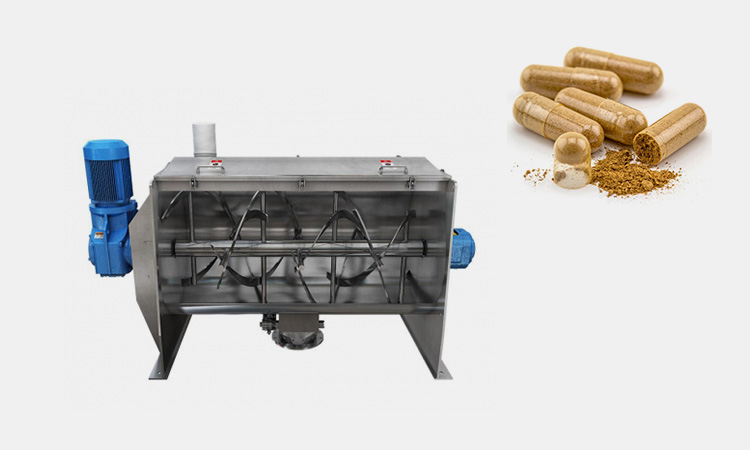
Main parts of ribbon mixer-sourced: etwinternational |
|
| Trough | Trough is the main structure of the ribbon mixer. All the material mixing is done inside it. It is mainly made of stainless steel and the inner wall is welded, polished and sealed. |
| Ribbon agitator | Ribbon agitator mainly consists of a rotating shaft and spiral blades. When the rotating shaft moves, the material moves from the center of the trough to the end of the trough. |
| Drive system | Ribbon mixer mainly adopts three methods: belt drive, chain drive and direct gear drive. But the safest and most reliable is direct gear drive. It is the most efficient and compact. |
| Feed inlet | The feed inlet of the ribbon mixer is at the top of the mixer. Open the cover at the bottom and you can add or reduce the material. |
| Discharge valve | After the material is stirred and mixed, it will be discharged from the discharge valve. |
| Control panel | All types of ribbon mixers are equipped with a control panel. It allows operators to set and adjust the mixing time, speed, etc. |
| Cover | By equipping a cover, it can help prevent the material from splashing during the processing process. At the same time, it also protects the safety of operators. |
Tumble mixer
AIPAK tumble mixer
Tumble mixer, is a rotary low impact mixer. It is usually used to process mild materials. Because its mixing speed is generally controlled at about 5 to 25 rpm. By providing a variable frequency drive, the tumble mixer can provide you with a soft start.
Working principle of tumble mixer:
Tumble mixer mainly adopts the mixing and mixing mechanism of tumbling and diffusion. When the equipment container rotates along the horizontal axis, the materials in the container will also tumble and pour along the horizontal axis. They will be continuously tumbled and mixed along the sides of the container wall. Due to the weak shear and mixing force, the tumble mixer is more suitable for fine powder mixtures.
Main parts of tumble mixer:
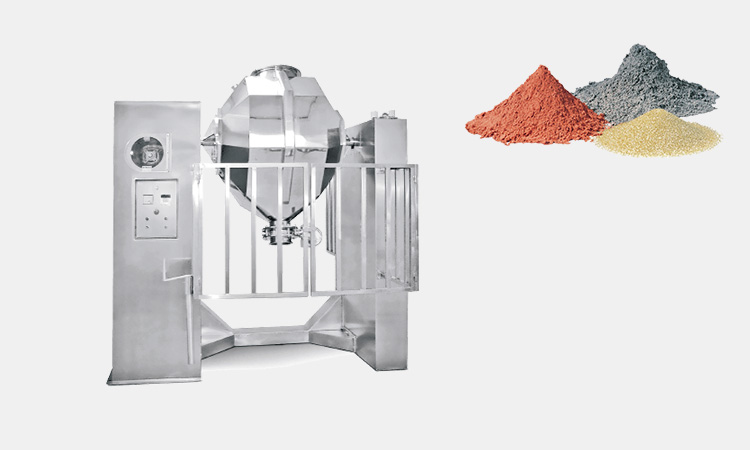
Main parts of tumble mixer-sourced: inora |
|
| Rotation counter | It is used to calculate and control the mixing efficiency and speed of the tumble mixer. The rotation action of the entire equipment needs to be completed by it. |
| Drive system | The rotation counter is operated and controlled by the drive system to control the mixing and mixing of materials. |
| Mixing bin | The mixing bin is made of a cube and a cone, which are spliced and welded together. Made of stainless steel, it can withstand the impact of various materials. |
| PLC controller | The operation of the equipment can be controlled by setting and adjusting on the operation panel. |
| Clamping bars | Clamping bars are specially used to fix the mixing bin and equipment bracket to enhance the stability of the equipment. |
| Charge and discharge ports | Used for powder feeding and discharging. |
Double cone mixer
AIPAK double cone mixer
Double cone mixer is a versatile mixer. Unlike traditional double cone mixers, it has no dead spots inside the container. This design helps the machine to load, handle and unload large volumes of materials. Thanks to the design without dead spots, the double cone mixer is very easy to clean and maintain.
Working principle of double cone mixer:
When the materials are loaded into the double cone mixer, they rotate and tumble along the horizontal axis. The mixer can only hold materials up to two-thirds of the cone. This ensures that all materials are mixed completely and evenly.
Main parts of double cone mixer:
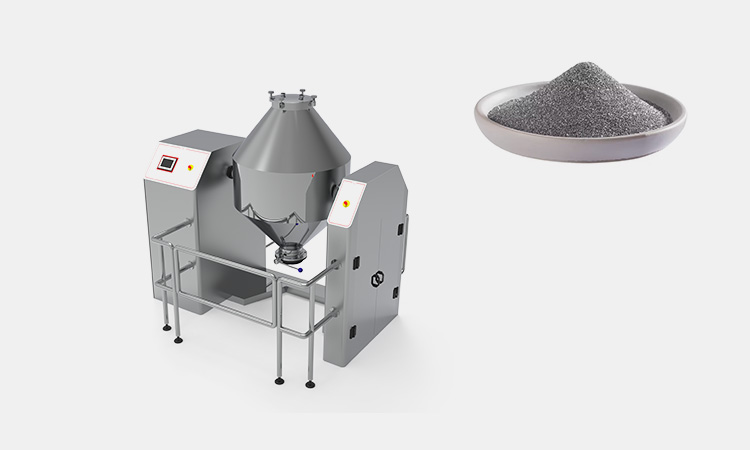
Main parts of double cone mixer-sourced: scinox |
|
| Feeding port | The feeding port is designed on the top of the mixing barrel to facilitate your material loading. |
| Barrel | It is a huge cone container welded by double cones. |
| Helical blades | The helical blades located in the barrel can shear various hard solid materials into finer materials. |
| Injection system | The injection system can add your ingredients or auxiliary materials to the main material. |
| Cover | Located on the top of the barrel, it can seal the materials exposed to the air. |
| Operating system | Equipped with a digital control unit, it can help control and adjust all procedures in the operation of the equipment. |
| Butterfly valve | By controlling this valve, it can help you discharge the processed materials. |
Three dimension mixer
AIPAK three dimension mixer
Three dimension mixer can achieve efficient three-dimensional mixing and stirring of powder. Through the mixer in the barrel, it can promote the mixing and stirring of materials from three directions, thus resolving the problem of material separation and accumulation caused by the centrifugal effect. Because of its huge volume, the equipment can be easily moved even under the maximum load.
Working principle of three dimension mixer:
During the mixing process, the powder will move from the center of the tank to the end of the tank as the equipment moves. At the same time, it will also move three-dimensionally from top to bottom. This short-term efficient mixing equipment is very suitable for shearing and mixing highly sensitive solid particles and highly abrasive products.
Main parts of three dimension mixer:
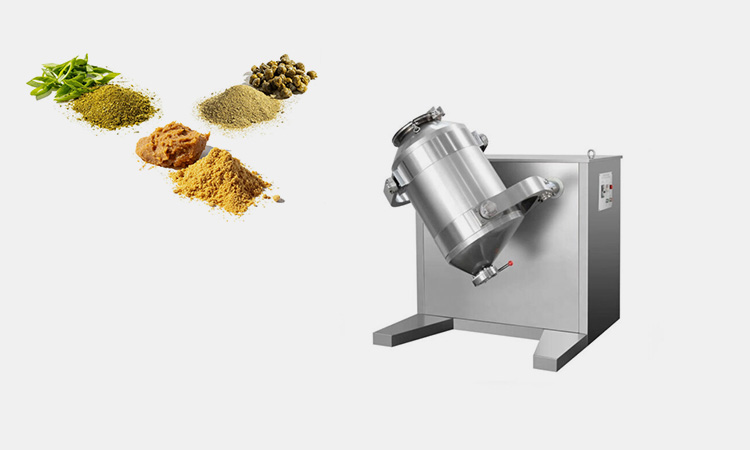
Main parts of three dimension mixer-sourced: vibrosievingmachine |
|
| Mixing chamber | The mixing chamber is the main container for material processing. It has different specifications and capacities, generally ranging from 0.5L to 20L. |
| Motor and gearbox | The motor mainly provides the driving force for the rotation of the drum. The gearbox can adjust the power level of the equipment for you. |
| Control system | It can adjust the time, speed, efficiency, etc. of material mixing. |
| Discharge valve | It is mainly responsible for unloading the processed materials. |
CH trough mixer
AIPAK CH trough mixer
CH trough mixer is suitable for processing some dry powders or granular powders with good fluidity. Its U-shaped trough is equipped with an S-shaped stirring paddle. When the equipment is in operation, the stirring paddle will push the materials to be repeatedly turned and mixed to achieve high-quality mixing and stirring.
Working principle of CH trough mixer:
CH trough mixer mainly adopts electrical control, and the mixing time and speed can be set in advance. When the time is up, the equipment will automatically stop. The S-shaped stirring propeller in the U-shaped trough continuously stirs and turns the materials during operation.
Main parts of CH trough mixer:
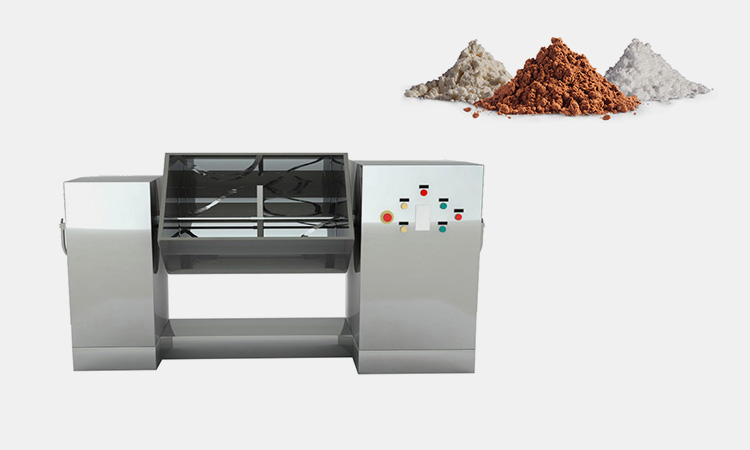
Main parts of AIPAK CH trough mixer |
|
| Cylinder | Cylinder is the main mixing place for powder materials. It is mainly U-shaped concave shape with an open top. |
| Dust cover | Dust cover can ensure that the materials will not be affected by dust and pollutants during the processing process. |
| Mixer | The agitator in the CH trough mixer is mainly a scraper. |
| Gear | Gear is a horizontally arranged metal component. It can control the rotation and movement of the agitator, thereby controlling the mixing efficiency. |
| Control system | Helps control the start-up, emergency braking, mixing speed and time of the equipment. |
| Motor | Responsible for providing power for the mixing of materials. |
V blender
V blender
The V blender has a sturdy structure. It is mainly composed of two cylindrical barrels spliced together in a V-shaped structure. It is more suitable for large-scale powder material mixing. The equipment is equipped with a stirrer and an impeller inside, which can make the material fall from one side to the other during the processing. This can ensure a better mixing effect.
Working principle of V blender:
When the equipment is in operation, the two inclined cylinders will move the material back and forth through mechanical transmission. During the movement of the material, it will be sheared and ground by the stirrer inside the cylinder, which will accelerate the splitting and mixing of the particles and finally achieve uniform mixing.
Main parts of V blender:
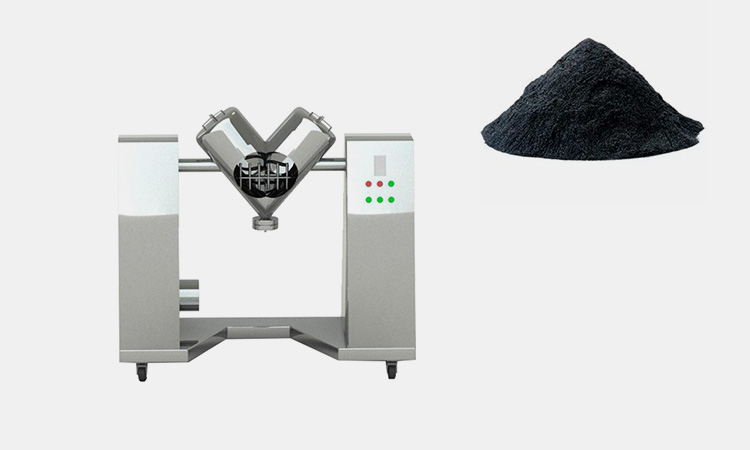
Main parts of AIPAK V blender |
|
| Twin cylindrical shells | Twin cylindrical shells is the main place for material to be carried out. It is composed of two hollow cylinders spliced together at an angle of about 70°. |
| Discharge system | The discharge system of the V blender is usually located at the bottom of the cylinder and is equipped with an efficient valve to facilitate the unloading of materials. |
| Control system | It is equipped with a full set of control systems, and the overall operation of the equipment can be completed through PLC. |
| Drive mechanism | The drive mechanism can provide enough rotational force for the cylindrical shell to complete material processing and mixing. |
| Safety guard | Safety guard mainly includes protective devices and guardrails, which can protect operators from harm during the operation of the equipment. |
| Support stands | The V blender mainly uses sturdy stainless steel stands and can provide support for the machine during operation. |
Bin blender
AIPAK bin blender
Bin blender, also called as IBC bin blender, is a device that uses variable frequency control technology to complete the lifting, mixing, and lowering of the hopper. While ensuring that the materials can be evenly mixed, it can also adapt to the needs of different capacities.
Working principle of bin blender:
Bin blender is a device that mainly diffuses and mixes materials through free fall. There is no agitator in its bin. During operation, the equipment will continue to roll up and down, causing the materials in the bin to fall freely and roll up and down.
Main parts of bin blender:
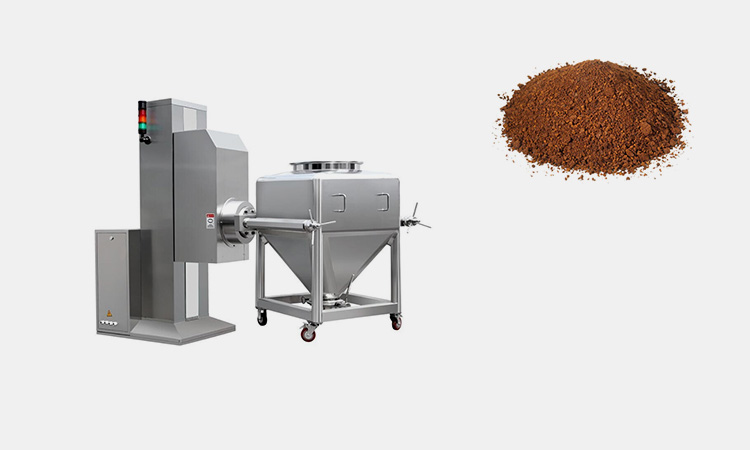
Main parts of AIPAK bin blender |
|
| Fixed chassis | The chassis of the bin blender is fixed. |
| Post | The low-carbon steel column structure design can withstand huge pressure and smoothly complete the clamping, lifting, mixing, and lowering of the hopper. |
| Lifting system | The lifting system is the core component of the bin blender. It uses a hydraulic system to complete the lifting and lowering of the entire bin. |
| Rotary system | The Rotary system is the power unit of the mixing system. It can provide huge power and torque for the rotation of the entire device. |
| Control system | The control system of Bin blender is mainly composed of control panel, electrical components, etc. It provides convenience for you to operate the equipment. |
| Driving and braking system | The driving and braking system can provide power and deceleration for the lifting and lowering of the bin. |
7.What May Affect Mixing Uniformity of Powder Mixer?
Powder mixing is a complex process. It generally needs to meet certain standards to be considered a qualified product. There are many factors that affect mixing uniformity, including:
Powder density
Powder density-sourced: cacao-barry
The greater the difference in density of the powders to be processed, the more difficult it is to mix the powders. Light powders are easily wrapped around heavy powders, making the powders unevenly mixed and difficult to break up.
Powder fluidity
Powder fluidity-sourced: azom
Generally, powders with poor fluidity are more difficult to handle. Because powders with poor fluidity are more likely to stick and are not suitable for powder mixers, but are more suitable for liquid mixers.
Powder particle size
Powder particle size-sourced: pastryartsmag
The particle size of the powder mainly refers to the diameter of the particles. The greater the difference in the particle size of the powder, the lower the mixing speed and efficiency.
8.What May Determine The Mixing Effect Of Powder Mixer?
In addition to the reasons of the powder material itself, some parts of the operation and use of the powder mixer will also affect the mixing effect of the powder. They are:
Mixing Effect Of Powder Mixer-sourced: rongxin
Material loading
Before mixing the materials, load the appropriate amount of materials according to the type of mixing equipment you choose. Usually, the material loading amount of the mixing equipment for the best mixing effect is around 30%-70%. Exceeding this range, the mixing effect will be affected.
Mixing time
The time for mixing the materials is proportional to the effect you need to mix. After the materials are mixed evenly, they will reach a peak. Through the mixing state of the materials, you need to constantly monitor the mixing effect.
Reasonable model selection
Different materials have different choices for powder mixers. No mixing equipment can meet the selection of all types of materials.
9.How To Sample And Test The Powder Mixing Uniformity?
To test the mixing uniformity, you can take samples and test by the following methods.
Sampling
Sampling-sourced: cnbrt
Take samples of the processed powder according to the requirements of the formula. It is best to take samples three times for the same batch of products. It is best not to take samples repeatedly in one place.
Testing
Testing-sourced: atslab
You can test the uniformity of the powder by naked eye or microscope, or by chemical reagents.
Analysis
Analyze the uniformity of the mixed powder by sampling and microscope or chemical reagents. Judge the uniformity of the mixed powder by naked eye or microscopic.
10.How To Maximize Mixing Efficiency By Powder Mixer?
In order to maximize the mixing efficiency of the powder mixing equipment, you can refer to the following methods for implementation.
Optimize mixing parameters
Before starting the mixing equipment, you can summarize the time speed, batch and size of mixing of different powders through various research and tests. So as to get the best mixing parameters.
Quality control
Quality control-sourced: medium
In order to ensure the uniformity and high quality of powder mixing, you can implement good quality control during the operation, such as real-time monitoring of the mixing state of the powder.
Operator training
Operator training-sourced: yokogawa
If you want to maximize the efficiency of powder mixing, then operator training is crucial. The operator's operation can maximize the various operation, maintenance and practice of the machine.
11.What Is The Powder Mixer Troubleshooting?
Learning how to maintain and repair can greatly facilitate your powder mixing.
Powder mixing takes too long
Powder mixing takes too long-sourced: bid-on-equipment
Why does it sometimes take too long to mix the same material with the same mixing equipment? This is because different equipment can hold different amounts of content. Different mixers have different maximum capacities.
Speed is too low
If the equipment is programmed correctly during operation, but the speed is still too low, then the reason may be that the parameters you set are wrong. You can readjust the parameters.
Powder particle properties vary too much
Powder particle properties vary too much-sourced: sofraden
If the final powder product has too different particle properties, it may be because the wrong mixing equipment was used or the mixing time was not reached.
Uniformity is not good enough
If the powder uniformity is not good enough, it may be because the particles of the powders you used were too different in the early stage.
12.What Are The Cleaning Steps For Your Powder Mixer?
Whether before or after use, the powder mixer should be thoroughly cleaned. The specific cleaning steps are:
Cleaning Steps For Your Powder Mixer-sourced: lfatabletpresses
Szep 1:
First, the additives specified by the manufacturer or in accordance with the application should be used as the cleaning agent.
Step 2:
Before cleaning with water, you need to thoroughly cover the system with the cleaning agent, such as the agitator or shear system or the pipe system.
Step 3:
Use the cleaning agent to thoroughly clean the parts to be cleaned, and then rinse with clean water until there is no foam.
Step 4:
Finally, check whether there is any residue. If so, clean it again with the cleaning agent, and finally rinse with clean water, and finally air dry.
13.What Are The Tips When Choosing A Powder Mixer?
When choosing a powder mixing device that suits you, you need to consider the following factors:
Agitator type
Agitator type-sourced: rongxin
Choose the type of agitator that suits you according to the particle size and difference of your material. If the difference is large, you can choose a type with stronger shear force.
Mixing intensity and speed
Mixing intensity and speed-sourced: nicetymachine
When choosing a mixing device, you should also consider the speed and strength of the agitator. If your powder particles are large or the difference is strong, it is recommended that you choose a type with faster or stronger mixing speed.
Compatibility of structure and materials
Similarly, if the powder you need to mix is used in the pharmaceutical industry or the food industry, which has a relatively high threshold level, it is recommended that you choose an excellent stainless steel type mixing device to meet your process requirements.
Mixing capacity
The mixing capacity of a powder mixer is also very important. An excellent powder mixer can process different materials simultaneously or in batches.
Conclusion:
Through this complete FAQ guide of powder mixer, you can learn well of the types, speed, strength, structure, material compatibility, quality control, automation, process handling and maintenance, cleaning and other related knowledge of different powder mixers. Being able to choose a powder mixer that suits you is crucial to your material processing. If there are more things to know or curious about, please contact AIPAK now!
Don't forget to share this post!
Bin Mixer Related Posts
Bin Mixer Related Products
Bin Mixer Related Videos
CONTACT US
Tell us your raw material and project budget to get quotations within 24 hours.
WhatsApp Us: +86 181 6426 8586
Want the best price & newest pharmaceutical machinery buying guide,tips and trends sent straightly to your box?Sign up for AIPAK’s monthly newsletter,we’re free for your consultation and Offer you the most suitable solutions!
The Buyer's Guide
- Capsule Filling Buyer's Guide
- Blister Packaging Buyer's Guide
- Tablet Counting Buyer's Guide
- Tube Filling Buyer's Guide
- Cartoning Buyer's Guide
- Gummy Making Buyer's Guide
- CO2 Extraction Buyer's Guide
- Empty Capsules Buyer's Guide
- Suppository Filling Buyer's Guide
- Tablet Coating Buyer's Guide
- Tablet Press Buyer's Guide
- Softgel Encapsulation Buyer's Guide
Most Popular
- 7 Importance Of Pharmaceutical Packaging In Different Applications You Must Know
- 6 Advantages You Must Know About Tablet Counting Machine
- 8 Advantages of Blister Packaging You Must Know
- 6 Critical Applications of Automatic Capsule Filling Machine
- 6 Stations You must Know to Improve the Filling Quality of Automatic Capsule Filling Machine
